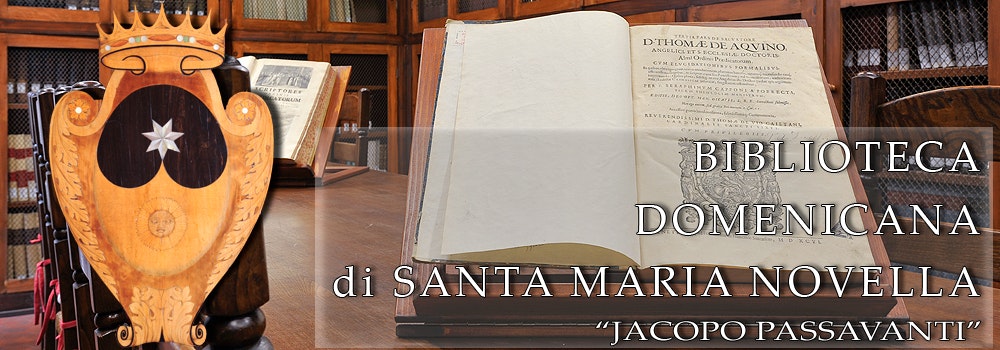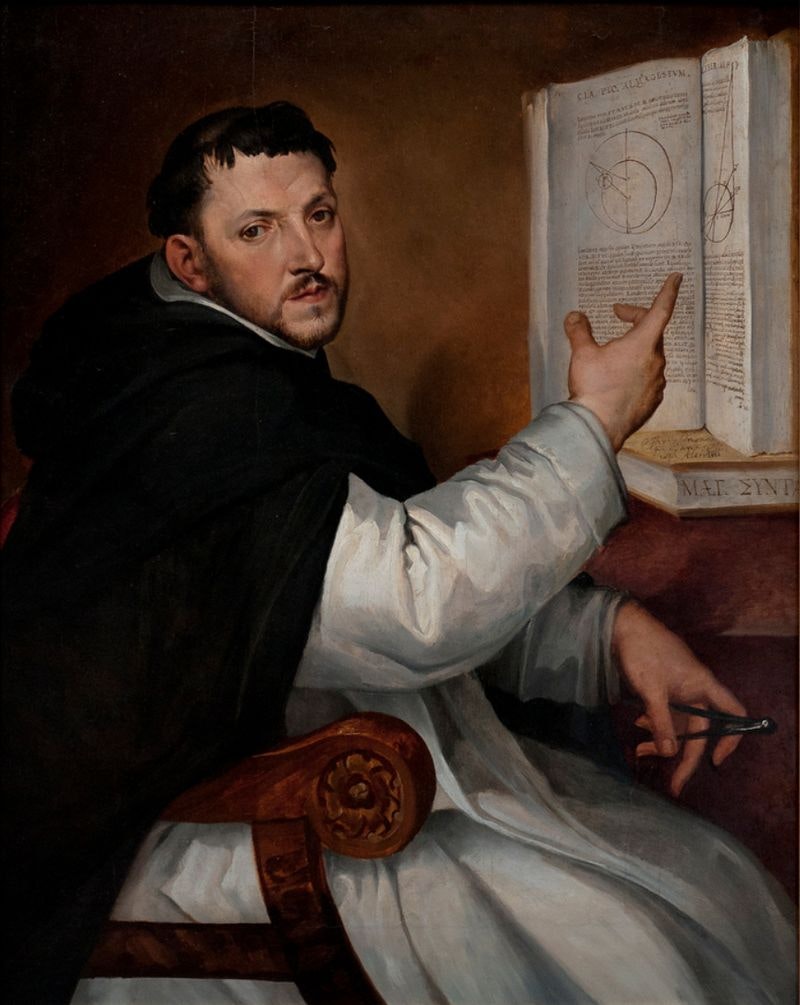
Portrait of Ignazio Danti by (about 1576-86). Source: Musée des beaux-arts de Brest
Mathematician, astronomer, Dominican friar and even cosmographer. Pellegrino Rainaldi Danti aka Egnazio Danti (Perugia 1536 - Alatri 1586), since he was a small child he learned the rudiments of painting and architecture from his family members. However, his leaning for mathematics and science played a significant part in his future life.
After studying philosophy and theology, he tirelessly dedicated its efforts on mathematics, astronomy and geography.
In 1567 or so, Cosimo I de Medici, Duke of Tuscany summoned him in his court to develop and share the mathematical and astronomical studies in the territory of his competence.
He became soon a Grand Ducal cosmographer working hard on the maps that are still decorating the Hall of Charts in Palazzo Vecchio.
During his permanence in Florence Danti lived at the convent of Santa Maria Novella assembling the armillary sphere, the gnomon and the gnomonic holes on the façade. The modern meridian lines installed inside the present church are constructed following the studies and the realization of the gnomic holes made by Danti in the last decades of the sixteenth century.
During his life he realized numerous scientific instruments and he wrote many popular texts about the construction and utilization of these tools, especially the astrolabe that was of great support in the astronomical calculations.
Meanwhile in Florence, the successor of the Grand Duke Cosimo, Francesco I broke off all relations with Danti. Invited in Rome by Pope Gregory XIII Danti worked with great passion to the making of the Vatican maps, becoming the official pontifical mathematician and member of the commission for the reformation of the former Giulian calendar. He also followed up the works of other painters called by the Pope, to continue after Raphael, to draw the maps of Italian territories.
In Rome Danti also planned the reparations of the ancient port of Claudio collaborating with the great architect Domenico Fontana.
He published the translation of some of Euclid's works and he wrote the life of the architect Jacopo Barozzi from Vignola. In recognition of his work, Pope Gregory XIII, in 1583, appointed him Bishop of Alatri in Lazio.
Danti was very active in his ecclesiastical activity, summoned a diocesan synod, he fought against abuse, showing great attention to the poors.
It was also a promoter and project manager of the Annunciation Monastery (now a national monument).
A few years after his death, Pope Sixtus V requested his presence to Rome to oversee the arrangement of the great obelisk in the Vatican square.
Egnazio Danti died of pneumonia at Alatri in 1586. After his death, his chair of mathematics at the University of Bologna was appointed to Giovanni Antonio Magini, favorite pupil of Galileo Galilei.
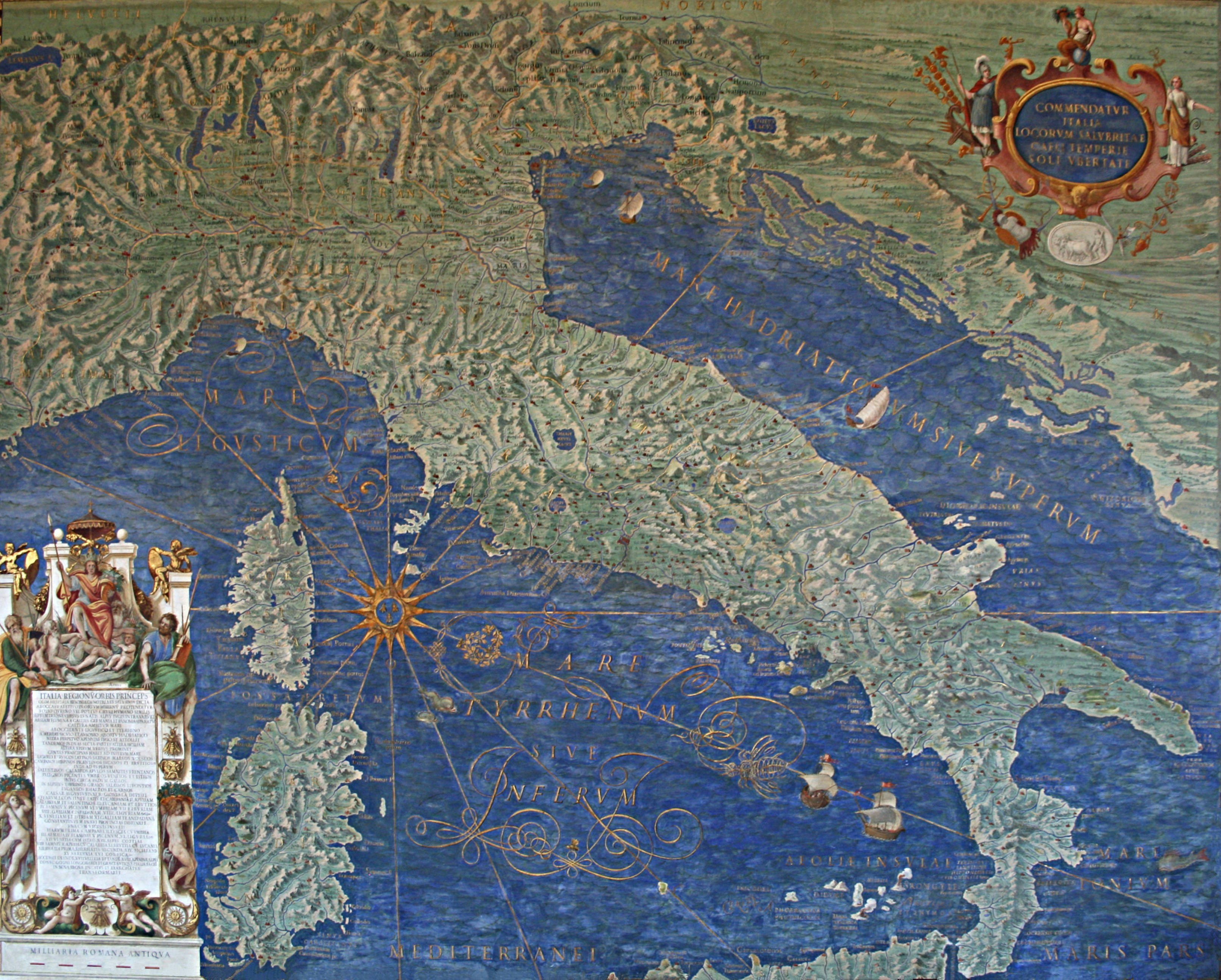
One of the maps designed by Egnazio Danti. PalazzoVecchio, Hall of Charts, Florence (about 1564-1575)

One of the maps designed by Egnazio Danti. PalazzoVecchio, Hall of Charts, Florence (about 1564-1575)
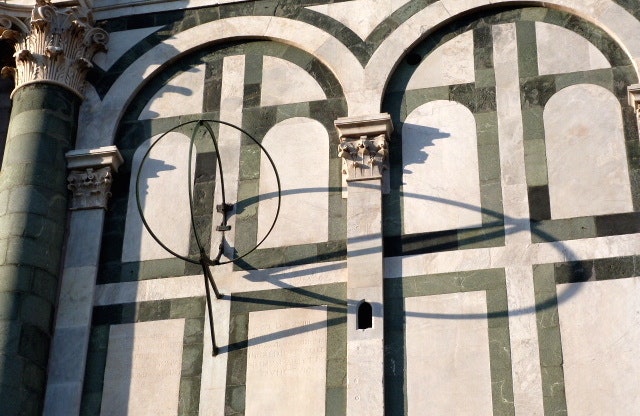
The equinox sphere placed on the facade of the Basilica of Santa Maria Novella (replica)
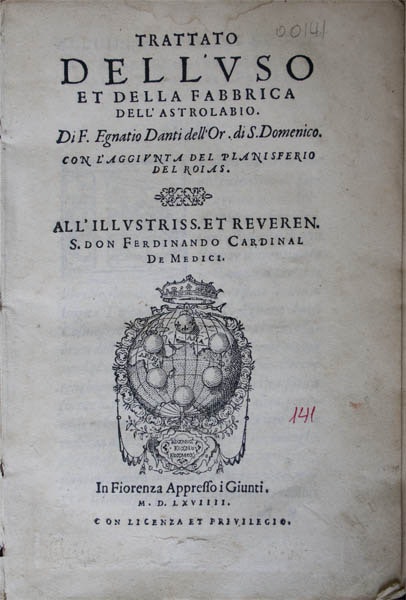
One of Danti's astronomical treatises. Some of these books can still be consulted in the Dominican library of Florence. For info: http://www.bibliotecadomenicana.eu/
